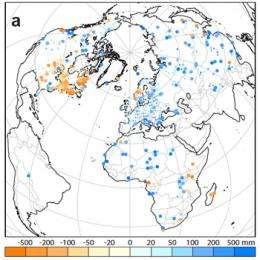Researchers recreating the past to predict the future of climate change

(PhysOrg.com) -- New findings published in Nature Climate Change, show that while current climate models have the ability to reproduce important features of the changing climate, including the greater warming experienced over land than over the ocean, comparisons against observations suggest that they tend to seriously underestimate the magnitude of the regional changes.
“This is worrying because it suggests that future regional climate changes may be larger than currently predicted,” says palaeoclimatologist Sandy Harrison, Macquarie University.
Sandy Harrison is part of the Palaeoclimate Modelling Intercomparison Project (PMIP) - an international group of the major climate modeling centres and scientists who reconstruct past climates and have been testing models over 20 years.
Harrison, along with other leading scientists from PMIP created climate simulations of the past major changes in natural climate forcing, similar to the magnitude that has been projected to occur over the next century. The group has done several palaeoclimate simulations of the Last Glacial Maximum (21,000 years ago), the Mid-Holocene (6000 years ago) and the last Millennium.
This is the first time this has been done using current climate change modeling. Then using palaeodata collected from ice core, marine and terrestrial archives to provide information about actual environmental responses to past climate changes they compared how accurate the predictions were.
Although PMIP has confirmed the soundness of the strategy of using global climate models to simulate climates that differ from the present day, it is important to understand exactly how and why current state-of-the-art models do not show changes as large as observed in the past.
“Climate models are the only credible tools we have for predicting what might happen to climate in the future. Although they have been shown to do this rather well, there is still some uncertainty about how well they will simulate a radically different climate,” says Harrison. “These results are important for us to help assess the gaps in current models and determine areas that require improvement for future modelling.”
This is the ongoing aim for PMIP who will now use these results in their continued effort to improved understanding of twenty-first century climates and improve the modelling tools needed to predict the future.
“Isolating the reasons for discrepancies in current models will be our next major task so we can continue our assessment of the realism of the models used to predict the future.” says Harrison.
Journal information: Nature Climate Change
Provided by Macquarie University










.jpg)




